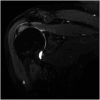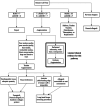Augmentation Techniques for Rotator Cuff Repairs
- PMID: 40238930
- PMCID: PMC11999096
- DOI: 10.2106/JBJS.RVW.25.00007
Augmentation Techniques for Rotator Cuff Repairs
Abstract
» Despite enhanced understanding of risk factors for failure and enhanced surgical repair techniques, the risk for failure of the rotator cuff to heal after surgery is still substantial.» A patient-specific approach to augmentation is essential, with decisions based on tear and patient characteristics.» Augmentation can improve repair strength and promote cellular infiltration, which collectively contribute to better healing outcomes.» Augmentation strategies may improve outcomes in rotator cuff repairs, particularly in high-risk cases; however, there is a lack of consensus among surgeons on the most effective strategies for each scenario.
Copyright © 2025 The Authors. Published by The Journal of Bone and Joint Surgery, Incorporated.
Conflict of interest statement
Disclosure: The Disclosure of Potential Conflicts of Interest forms are provided with the online version of the article (http://links.lww.com/JBJSREV/B210).
Figures







References
-
- Morikawa D, Johnson JD, Kia C, McCarthy MBR, Macken C, Bellas N, Baldino JB, Cote MP, Mazzocca AD. Examining the potency of subacromial bursal cells as a potential augmentation for rotator cuff healing: an in vitro study. Arthroscopy. 2019;35(11):2978-88. - PubMed
Publication types
MeSH terms
LinkOut - more resources
Full Text Sources
Medical

